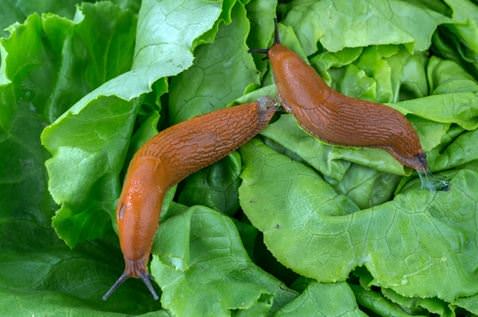Pesticides inadvertently increase crop damage from slugs
![]()
Many farmers see pesticides as essential to the health of their crops. Without them, their plants may die before they are even mature and viable to produce food. These plants are in danger because of fungus, insects and rodents – all of which may be killed by various pesticides.
However, the important thing to remember about pesticides is that they may impact the whole environment and not just the organisms that they target. They may contaminate waterways and poison aquatic life, or they may disrupt the local food chain in a way that increases the population of other pests.
For example, one team of scientists from Pennsylvania State University and the University of South Florida suggested that one type of neonicotinoid may potentially lead to the rise of slug populations, thus further endangering crop yields, as published in the Journal of Applied Ecology.
How harmful are slugs?
Experts from Penn State noted that slugs typically feed on broadleaf plants and weeds. They can attack all parts of the plant, including the leaves, stems, roots and even seeds. Crops that slugs enjoy eating include corn, alfalfa, soybeans, canola and others.
Farmers often find slug control difficult because different species of slugs have lifecycles in which every stage from egg to adult can be found in the field throughout the year. One slug alone can lay hundreds of eggs. Furthermore, there are few pest control techniques that effectively curb slug populations. The chemical compounds that are available may be prone to washing away easily or are expensive. When it comes to slugs, farmers may serve themselves well by taking a multi-pronged approach that incorporates chemical pesticides, selection of crops that sprout vigorous seedlings and reliance on the slugs' natural predators, which include centipedes, daddy longlegs, birds, frogs and various species of beetles.
Neonicotinoids 'should be used with care'
Pesticides can backfire on farmers because they unintentionally drive up the population of pests such as slugs. To observe this effect, the authors of the new paper conducted experiments in both the field and laboratory.
In the lab, the slugs encountered three types of soybean seeds: untreated, treated with fungicide, and treated with both fungicide and the neonicotinoid thiamethoxam. Like all neonicotinoids, thiamethoxam interacts with nicotinic acetylcholine receptor sites, thus inducing neurotoxic events in insects, according to the Food and Agriculture Organization of the United Nations. After the slugs consumed the soybeans, they were observed for survival rates. Results from this experiment showed that the slugs were not harmed by either the fungicide or thiamethoxam. However, when the slugs were fed to predator beetles, the insects that ate slugs that consumed thiamethoxam died, thus demonstrating a mechanism by which neonicotinoids can actually increase the slug population.
The field experiment included observations of slug populations and crop yields within quarter-acre plots of soybeans that were either treated or not treated with neonicotinoids. By the end of this study, the researchers observed that use of the pesticides decreased soybean density by 19 percent and reduced crop yield by 5 percent.
"Neonicotinoids are the most widely used insecticides in the world," study co-author Margaret Douglas, graduate student in entomology at Penn State, said in a statement. "Seed applications of neonicotinoids are often viewed as cheap insurance against pest problems, but our results suggest that they can sometimes worsen pest problems and should be used with care."
"This phenomenon dispels the common belief in the United States that insect predators do not contribute to slug control," added John Tooker, associate professor of entomology at Penn State. "It also emphasizes that if growers care for these predator populations they can help with slug control."
Optimal control of slug populations in agriculture remains a topic of scientific study.
CONTACT US
Tel: +44 (0) 151 649 4000
Email: marketing@greyhoundchrom.com
FOLLOW US
YOU MAY ALSO BE INTERESTED IN OUR NEWSLETTER
















